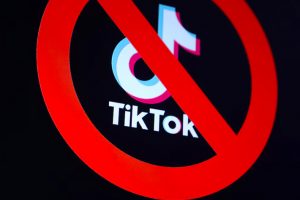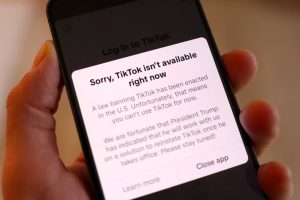(ATF) As Chinese internet giant ByteDance begins the process of laying off staff and scaling down its operation in India after it was banned last year, local app and online content developers are seizing the opportunity to make their presence felt.
Indian app developers say the demand for local apps and content creation platforms similar to the Chinese apps has gone up significantly following their ban last year, as has consumption of local content on Indian apps.
ByteDance, the owner of short-video apps TikTok and Helo, said on Wednesday that it is scaling down its operations in India and has laid off a major part of its workforce there, after the government imposed a permanent ban on the two apps early this week following a second border conflict with China in recent days.
Although ByteDance did not comment on the number of layoffs, reportedly over 1,000 employees of its 2,000-plus Indian workers could lose their jobs right away, and more going forward as the internet giant mulls retaining just a handful of employees to support its global teams in critical roles.
According to reports, TikTok’s interim global head Vanessa Pappas and Blake Chandlee, vice president for global business solutions, said in an internal email to employees: “In 2020, due to an interim ban issued by the government of India, we were forced to close some of our businesses.”
The email added that while ByteDance had tried its best to remain afloat, but the lack of clear direction from Indian officials, on how and when the apps could be reinstated, forced the company to scale down.
And, “This has opened up an opportunity for many Indian apps to come in and occupy the spaces vacated by the Chinese apps. Following the ban there has been a surge of downloads of Indian apps in similar category. Clearly a change in consumer behaviour is driving this content consumption,” Rajan Navani, the managing director of a local apps and content platform developer JetSynthesys told Asia Times Financial.
TikTok, which became a phenomenon in India with user-generated short videos, saw 659.5 million downloads in the country until the ban was imposed, accounting for 30% of global downloads, according to Sensor Tower. Before the ban, India had been one of TikTok’s largest markets and ByteDance in 2019 had laid out plans to invest $1 billion in India.
Since then, more than a dozen new players have launched apps to replace TikTok.
According to consultancy Redseer, the downloads of Indian apps similar to TikTok and other popular banned Chinese apps such as Josh, Roposo and MX Takatak surged, and led to them capturing about 40% of TikTok’s market.
India’s app economy
While China remains the largest market in terms of usage and revenue, and American companies are perhaps the most innovative, India is now the top country in the world in terms of number of apps installed and used per month.
According to data from analytics and market intelligence firm App Annie’s State of Mobile 2021, Indian consumers spent $500 million on mobile apps across iOS and Google Play Store in 2020.
China and India were the top markets by app store downloads and hours spent in 2020 while China and the US topped the list in consumer spends, the report added.
In India, app store downloads stood at 24 billion while time spent on apps was 650 billion hours.
India stood in the third position in terms of average hours spent on mobile per day per user after Indonesia and Brazil, and the time spent on mobiles increased considerably to 4.6 hours in 2020 from 3.3 hours in 2019.
App Annie forecasts that by 2022, India will have 37.2 billion downloads a year, a growth rate of 207%, which makes it by far the fastest growing app market in the world.
But out of about 934,400 app publishers on Google Play, just 3% are from India, according to app data tracker 42matters.
The ban then, has also opened up the door for non-Chinese global content companies.
“India gave the Chinese companies a large consumer base and the Chinese apps monetised that huge consumer base in the Western markets to become valuable companies. That business model could be replicated by others (western app developers and marketers) by filling the gap created by the ban for Chinese apps,” Navani of JetSynthesys said.
China not happy
India banned 59 Chinese apps in June last year for being a threat to India’s sovereignty, integrity and national security. The list included TikTok, Helo, WeChat, Alibaba’s UC Browser and UC News, Shein, Club Factory, Likee, Bigo Live, Kwai, Clash of Kings and Cam Scanner besides others.
But that was just the start. Later, in September, the government banned 118 more apps, and in November, it blocked 43 new Chinese mobile apps in the country, including shopping website AliExpress. The banned Chinese apps in latter round included PUBG Mobile, Snack Video, Cam Card, WeWorkChina and WeDate.
After the bans in November, China said it firmly opposed India’s decision and claimed the move violated WTO rules.
Chinese Foreign Ministry spokesman Zhao Lijian told a media briefing: “This behaviour violates market principles and World Trade Organisation rules, and severely undermines the legitimate rights and interests of Chinese companies. China firmly rejects it.”
Local app developers, however, are undaunted.
“While the Indian app industry is conscious about job losses and the hit on the livelihood of those who have lost their jobs, it is geared up to meet the challenges and opportunities that the ban has created and to absorb the growing workforce,” Navani said.
READ MORE:























